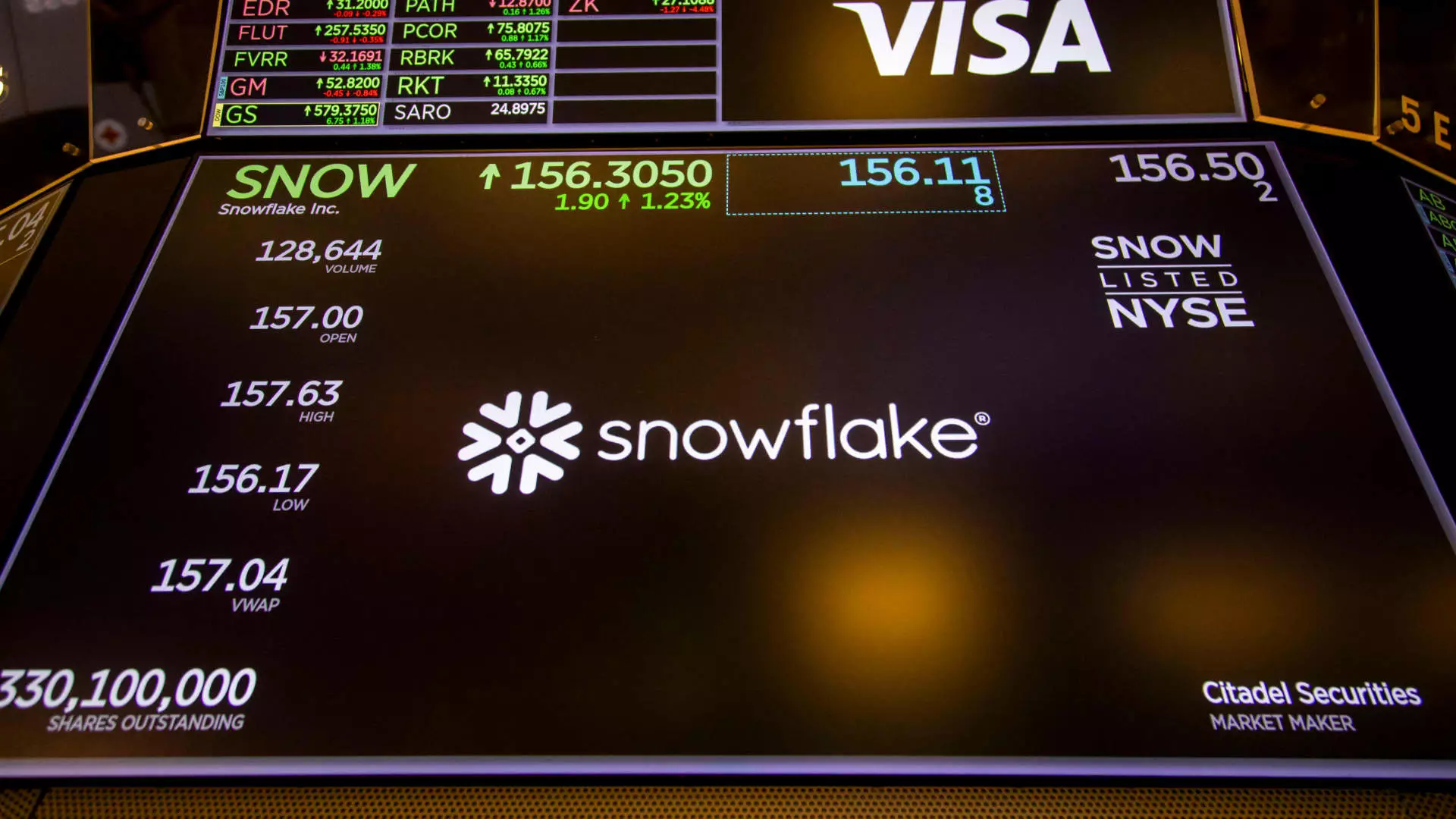In a remarkable twist for Snowflake, a company that has often had its fair share of ups and downs since going public in 2020, the latest earnings report presents a juxtaposition of triumph and turmoil. The stock surged 12% in a single day, yet beneath the veil of celebration lies a complex narrative that warrants a closer examination. Recording its first quarter with over $1 billion in revenue—$1.04 billion, to be precise—the 26% year-on-year increase from $828.7 million has investors buzzing. But let’s not gloss over the reality; this explosive revenue growth starkly contrasts with the net loss of $430 million reported. This paints a picture of a company grappling with significant operational challenges.
A Deep Dive into the Numbers
It’s easy to be swept off your feet by soaring stock prices, but investors must temper their enthusiasm with a critical view of the broader financial landscape. While the adjusted earnings per share of 24 cents beat the average analyst estimate of 21 cents, it doesn’t overshadow the disconcerting fact that losses have widened from the previous year. This raises questions about sustainability—are we witnessing a temporary spike driven by new acquisitions or a long-term shift? The substantial operating losses underscore the persistent struggle to attain profitability in a fiercely competitive tech landscape.
AI Services: The Double-Edged Sword
Snowflake’s aggressive push into artificial intelligence services, designed to bolster its data analytics platform, shows promise but also emphasizes a strategic gamble. With over 11,000 customers now accessible, the hope is that these additions will lead to long-term gains. However, reliance on AI also risks overextension, potentially alienating existing clients who may feel overwhelmed by constant updates and new offerings. The innovation race is on, and while advancing into new territories can inspire loyalty, it can just as easily generate frustration among users accustomed to stability.
Market Reaction and Analyst Sentiment
Analysts remain bullish, with firms like Cantor highlighting two lucrative $100 million contracts that are seen as a positive sign amidst prior churn concerns. Yet, this optimism feels somewhat detached from the harsh realities evident in the numbers. Simply stating that churn fears have “abated” does little to allay the critical sentiments swirling around losses and operational uncertainty. Encouraging a ‘beat-and-raise’ strategy smacks of hopeful conjecture rather than robust confidence in a truly transformed business model.
The Broader Implications
While Snowflake’s impressive yearly stock rise of 29% contrasts sharply with the decline seen in the Nasdaq, it’s vital to realize that market movements aren’t always indicators of sound business practices. Are investors too swept up in the hype of technology trends, overlooking foundational issues? In this environment, it’s crucial to balance exuberance with critical oversight. Snowflake’s story serves as a cautionary tale about the risks of ignoring fiscal stability in favor of high-profile growth narratives. In this fast-paced tech world, sustainability might ultimately prove more valuable than shine.

